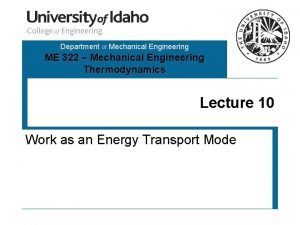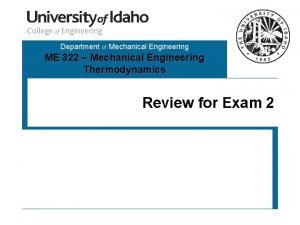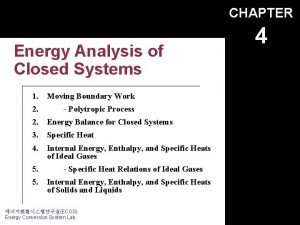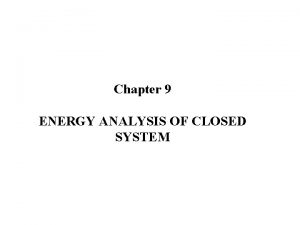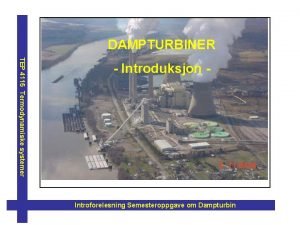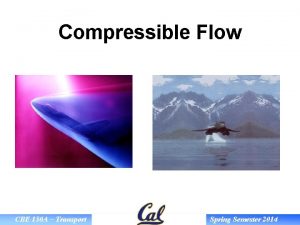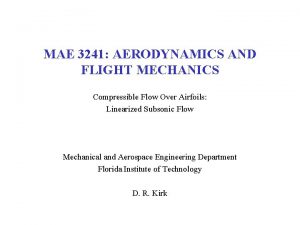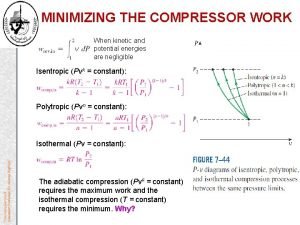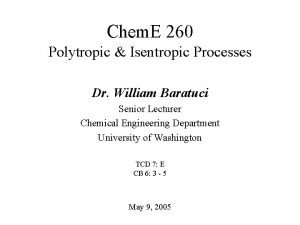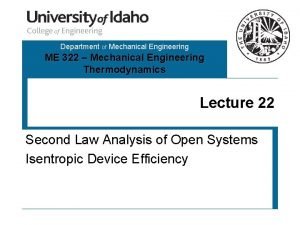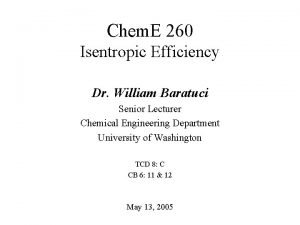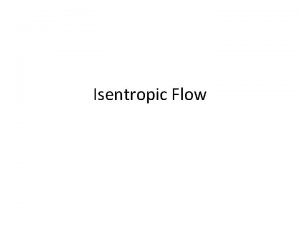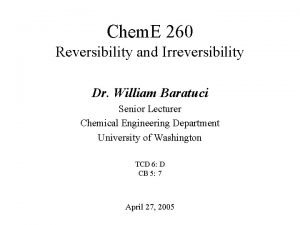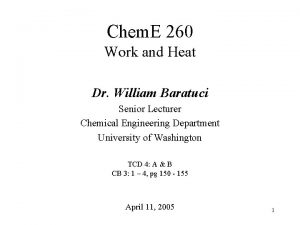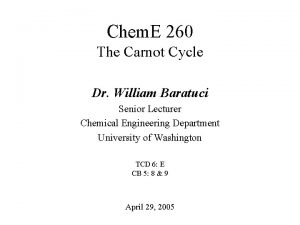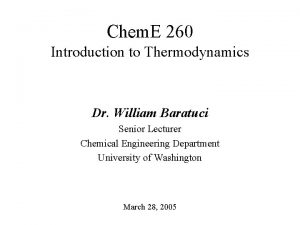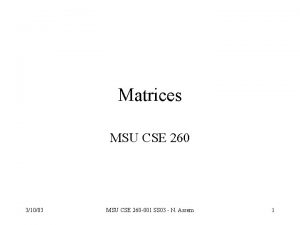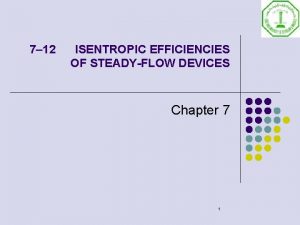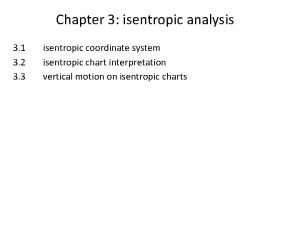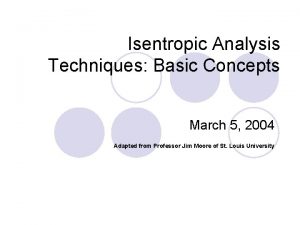Chem E 260 Polytropic Isentropic Processes Dr William













- Slides: 13

Chem. E 260 Polytropic & Isentropic Processes Dr. William Baratuci Senior Lecturer Chemical Engineering Department University of Washington TCD 7: E CB 6: 3 - 5 May 9, 2005

Relative Thermodynamic Properties • Gibbs Equations for ideal gases: • Consider an isentropic process from a reference state (Tref, Pref, Vref) to any other state (T, P, V). Note, So. Tref = 0. Gibbs Eqns become: • Define Relative Properties: (IG Properties Tables, functions of T only) • Advantage of using Relative Properties: Baratuci Chem. E 260 May 9, 2005

Using Relative Properties • Advantage of using Relative Properties: • Example: Baratuci Chem. E 260 May 9, 2005 Air expands in aturbine from 1000 K and 1 MPa to the surroundings at 100 k. Pa. If the air is an ideal gas and the turbine is isentropic, what is the temperature of the turbine exhaust ? T (K) PR 540 8. 3101 T 2 8. 6792 550 8. 8893 By interpolation :

Isentropic Processes • Assumptions: • Key equations: • Results: Baratuci Chem. E 260 May 9, 2005 Ideal Gas with constant and: and

Polytropic Processes • Definition: • Other relationships: • An isentropic process is a polytropic process where: • Isobaric process: • Isothermal process: • Isochoric process: Baratuci Chem. E 260 May 9, 2005

PV Diagram for Polytropic Processes Baratuci Chem. E 260 May 9, 2005

TS Diagram for Polytropic Processes Baratuci Chem. E 260 November May 16, 9, 2004 2005

Polytropic Process Paths on a TS Diagram • Gibbs Eqns, IG, Constant Heat Capacities: • Isentropic process: • Isobaric process: • Isothermal process: • Isochoric process: Baratuci Chem. E 260 May 9, 2005

Boundary Work in Polytropic Processes • Internally Reversible Processes: • =1 Isothermal: • 1 : • = : Isentropic: Baratuci Chem. E 260 May 9, 2005

Wb: PV Diagram Baratuci Chem. E 260 November May 16, 9, 2004 2005

Next Class … • Entropy Balances – Closed Systems: No Mass Crosses the System Boundary – Open Systems: Mass Crosses the System Boundary • Entropy Generation and Suniv • The Mechanical Energy Balance Equation – The Bernoulli Equation • PV Diagrams Revisited – Shaft Work on a PV Diagram ! Baratuci Chem. E 260 May 9, 2005

Example #1 • Saturated ammonia vapor enters an adiabatic compressor at -10 o. C and leaves at a pressure of 1. 0 MPa. Determine the work requirement per kg of ammonia for the compressor if the process is reversible.

Example #2 • The pressure-volume diagram of a Carnot power cycle executed by an ideal gas with constant specific heat ratio is shown in the diagram. Demonstrate that: – V 4 V 2 = V 1 V 3 – T 2 / T 3 = (P 2/ P 3)(( -1)/ )) – T 2 / T 3 = (V 3 / V 2) -1 P 1 2 T 1 = T 2 = TH 4 3 T 3 = T 4 = TC ^ V
 Amy gottfried umich
Amy gottfried umich What is a polytropic process in thermodynamics
What is a polytropic process in thermodynamics Polytropic meaning
Polytropic meaning Work done in polytropic process
Work done in polytropic process Rigid tank thermodynamics
Rigid tank thermodynamics Work done in polytropic process
Work done in polytropic process Concurrent processes are processes that
Concurrent processes are processes that Ideal gas entropy
Ideal gas entropy Isentropic vikingsgrad
Isentropic vikingsgrad Cbe150
Cbe150 Isentropic velocity
Isentropic velocity Isentropic efficiency for compressor
Isentropic efficiency for compressor Isentropic process
Isentropic process Isentropic nozzle efficiency
Isentropic nozzle efficiency

